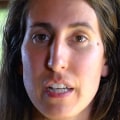Generic drugs account for a large portion of all prescription drugs, making up 89.1% of the total, but only 18.1% of the total annual spending.
Table 2
shows the distribution of drug prices in areas of high and low socioeconomic status (SES), as defined by the average household income in the zip code. In the United States, generic drugs are the only area where prices are lowest, representing 84% of the average paid in other countries. Out of those who take four or more prescription drugs, 32% report difficulty paying for their prescriptions, compared to one in five adults who take three or fewer. The majority of people, including seven out of ten Democrats, two-thirds of Independents and nearly six out of ten Republicans, agree that there is not enough regulation when it comes to limiting prescription drug prices.Eight out of ten partisans also believe that profits earned by pharmaceutical companies are an “important factor” in the price of prescription drugs. Our study examined the distribution of discounted drug prices by type of pharmacy, as well as the degree of price variation in areas with high and low incomes. We then analyzed how prices varied between pharmacies in the same zip code. The results showed little variation in the prices of pharmacy chains (IQR, 1.0), particularly compared to independent pharmacies (IQR, 2.4) and grocery stores (IQR, 4.30). Levofloxacin and azithromycin were found to be less expensive when purchased at pharmacies located in low-income zip codes compared to higher-income zip codes.
We obtained a full list of pharmacies operating in 82 zip codes from the California Board of Pharmacy. A limitation of our study is that we obtained drug prices over the phone and not in person, and pharmacies can offer discounts in stores that they cannot or do not want to offer over the phone. Additionally, several previous studies compared drug prices in the United States with those in other countries, but these studies used data dating back nearly a decade. The Kaiser Family Foundation is an independent source for research, surveys and news on health policy based in San Francisco, California. According to their survey results, 16% of people have not filled a prescription due to cost, 22% have taken an over-the-counter medication instead and 13% have cut their pills in half or missed a dose. A little less than half of the population say they are “very or fairly confident” that President Biden (46%) or Democrats in Congress (48%) will recommend what is right for the country when it comes to prescription drug prices.






